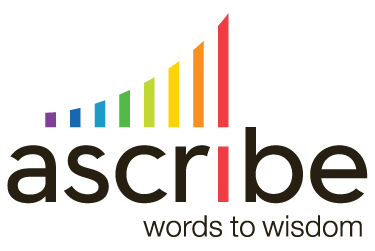What Is Sentiment Analysis and Why Is It Important?
Sentiment analysis is a specific type of text analytics that identifies three characteristics:
- Topic – what specifically a text comment is discussing
- Opinion – whether the speaker is positive or negative
- Emotion – the overall mood
Because the best way for people to convey their perceptions, feelings, and attitudes is in verbatim comments and open-ended text responses, it is challenging for most businesses to review and analyze the large volume of data collected. In the past, people had to read and assess every comment, making sentiment analysis time consuming, expensive, and rare.
Computers have become more adept at analyzing this kind of complex information about perception, emotion, and attitude. New computer-aided text analytics like Ascribe’s CX suite of software, CX Inspector and CX Snapshot, can process thousands of data points in seconds, identifying the emotions and attitudes conveyed in open-ended text responses. Ascribe delivers vital insights from these verbatim comments so that businesses can increase productivity, reduce analysis time, optimize their customer experiences, and catapult themselves ahead of their competition.
Creating positive customer, employee, and patient experiences (CX) is vital for businesses trying to stay competitive. In this era of real-time reviews, comments, and easy sharing across social media, one bad experience can spread faster than the flu. If a business’s reviews and ratings are consistently positive, people will be far more likely to try that business. The opposite is also true – consistent neutral and negative ratings hurt business. Paying attention to customer reviews, surveys, and other feedback will help organizations set themselves apart as providing the best experiences for their customers.
The question then becomes how to analyze the information contained in those reviews, verbatim comments, and open-ended text responses for what is called sentiment. Sentiment describes what customers and employees truly think about a company’s products, services, and brands. Thus, conducting sentiment analysis is essential to successfully improve the experience, winning more customers, and growing the business.
Best practices for sentiment analysis.
Measuring the ROI of marketing campaigns can be a real challenge. By gathering sentiment during a marketing campaign, businesses can unearth insights into how prospective customers feel about a brand. Marketers can then measure how that sentiment changes over the course of the campaign. They can also find the demographic segments that most closely align with a brand, their buying habits, and how to communicate more effectively to them. All of this allows teams to tailor their campaigns better to improve perceptions, set expectations, and scale for the best ROI.
Sentiment can help companies determine if lackluster sales come from a flaw in the product or issues with market perception. For example, a company develops a new, all-natural mineral sunscreen that more effectively reduces burning, blocks UV rays, and combats aging. Because of the all-natural ingredients, they feature the product at a higher price point. Upon release in major retailers, sales are disappointing.
Using sentiment analysis to survey data, classify using internal acronyms and terms, and filter according to a range of demographic characteristics.
Ascribe partners with large corporations to build solutions that efficiently and effectively categorize their entire dataset, no matter how large. Ascribe CX Inspector is robust enough to handle multiple languages, lists of acronyms and specific topics of priority, and a range of metadata to allow for complex filtering of responses. The resulting sentiment analysis delivers an incredible value, with insights just as useful as the quantitative results of employee surveys.
One of Ascribe’s clients is P&G. With 95,000 employees, their employee engagement survey delivered more than a quarter of a million text responses in 30 languages. Before working with CX Inspector, they read a fraction of the answers and could not uncover all the insights needed to respond appropriately to the issues raised.
Dr. Silke McCance, Senior Manager, Global Talent Practice, said that after working with Ascribe’s solution, “We are now gaining incredible value out of the verbatim responses; the insights are as useful as the quantitative answers. We are now able to better understand employee feedback by filtering and segmenting specific groups of employees. For example, we can now break out how female employees feel differently than other groups about a topic, and some of the reasons behind their sentiment.”
By analyzing the sentiment of every response, not just a tiny sampling, corporations can sort data by gender, language, and other specific populations which may have different experiences as a sub-group than the company as a whole. They can mitigate issues much earlier, detect successes more quickly, and ask follow-up questions in real-time to make better decisions.
Many customer service teams express frustration over survey fatigue. This issue poses a challenge to all organizations seeking to understand the customer experience better and improve it. People receive countless invitations to provide feedback, whether by following a link within an order confirmation, texting a number at the bottom of a receipt, or responding to a website pop-up. All these requests create noise that consumers just block out and ignore. This makes it a challenge for teams to collect enough data they can confidently use to improve.
Many times, even when customers do take a survey, the questions within those surveys do not ask the right questions or provide an opportunity for people to share what they want to share. Often the only open-ended question in a survey comes at the very end and says, “Is there anything else you’d like to add?”
Businesses that use sentiment analysis can ask fewer questions while receiving better data in the responses. Good questions for sentiment analysis are “Tell us how you feel about your overall experience with XX,” or “What comments would you like to share about your experience with XX?” Consumers have frustrations too, so asking the right one or two questions makes it easier for people to fill out surveys and communicate exactly what they want to quickly.
Using sentiment analysis makes everyone happier:
- Consumers have fewer questions to answer and are better able to describe their experiences.
- Businesses increase the number of completed surveys and receive better data cheaper and faster.
Using text analytics software like Ascribe CX Snapshot or CX Inspector saves businesses time and money, and it produces better insights from more customers. With better insights come better decisions, and better decisions make better customer experiences.
Those companies that deliver top-quality experiences will thrive in the marketplace. Businesses that gather and use sentiment analysis effectively will be well-equipped to deliver those best-in-class experiences and outpace their competitors.
How do Ascribe’s text analysis tools work?
The mechanics of sentiment analysis are very complex. Ascribe has built a proprietary, fully automated verbatim comment analysis tool that leverages artificial intelligence, machine learning, and advanced natural language processing (NLP). In general, text analytic software tools like CX Inspector and CX Snapshot parse sentences and phrases into individual pieces (or tokens), then run text analytics at any (or all) of three levels:
Sentence level —
determines topics and opinions/sentiment within a single sentence
Sub-sentence level —
provides sentiment within sub-expressions of a sentence
Document level —
provides the topic and sentiment of an entire document

Depending on the level of analytics, assessing 10,000 customer comments may well produce 50,000 pieces of raw data! Next, the system distills the raw data into findings that contain the topic, opinion, and emotion conveyed. Finally, it organizes the data in ways that emphasize important insights and allow client teams to explore findings quickly and intuitively:
- Grouping similar topics, preferably automatically or with a customized system controlled by the business.
- Ranking topics by frequency of occurrence, sentiment, or other metrics.
- Allowing individuals to filter the results in various ways (e.g., by demographics).
- Showing trends across time or other variables.
Choosing the right text analysis tool.
Ascribe’s sentiment analysis tools deliver the information businesses need to improve their customer experience. The tools begin producing helpful insights within seconds and empower teams to:
- Use keen understanding of individual brand perceptions and what specific topics consumers care about to inform important marketing decisions.
- Learn more about a customer’s relationship to the product and how they feel about it by tracking purchase intent via the sales funnel.
- Gather insight from the audience about how their buyer interacts with their product.
CX Snapshot
CX Snapshot is a powerful, automated, entry-level solution for companies in need of immediate customer experience data from customers’ verbatim comments. The CX Snapshot tool features an instant dashboard where users can find instant insights, share those insights, and export the data. If desired, businesses can also customize the dashboard and reports with their own branding.
Used with Ascribe’s Integration Suite, CX Snapshot automatically imports and exports data and can integrate it with structured data. It can also automatically group data into topics, analyze variances, and filter the results displayed. It works with 11 native languages to analyze topic and sentiment, using advanced NLP and artificial intelligence.
